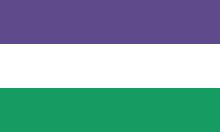
Back ناشطة حق تصويت المرأة Arabic ناشطة حق تصويت الست ARZ Sufrajistlər Azerbaijani Суфражысткі Byelorussian Суфражетки Bulgarian নারী ভোটাধিকার আন্দোলন Bengali/Bangla Suffragette Breton Suffragette Catalan Sufražetka Czech Swffragét Welsh
 | |
| Named after | Suffragist |
|---|---|
| Formation | 10 October 1903 |
| Founder | Emmeline Pankhurst (WSPU) |
| Purpose | Votes for women |
| Methods | Marches, heckling, civil disobedience, direct action, hunger strike, terrorism (see suffragette bombing and arson campaign) |
First suffragettes | Women's Social and Political Union |
Later groups |
|
Key people | Emmeline Pankhurst, Christabel Pankhurst, Sylvia Pankhurst, Teresa Billington-Greig, Emily Davison, Charlotte Despard, Flora Drummond, Annie Kenney, Constance Lytton, Emmeline Pethick-Lawrence, Evaline Hilda Burkitt, Mary Richardson, Lilian Lenton |
A suffragette was a member of an activist women's organisation in the early 20th century who, under the banner "Votes for Women", fought for the right to vote in public elections in the United Kingdom. The term refers in particular to members of the British Women's Social and Political Union (WSPU), a women-only movement founded in 1903 by Emmeline Pankhurst, which engaged in direct action and civil disobedience.[1][2] In 1906, a reporter writing in the Daily Mail coined the term suffragette for the WSPU, derived from suffragistα (any person advocating for voting rights), in order to belittle the women advocating women's suffrage.[3] The militants embraced the new name, even adopting it for use as the title of the newspaper published by the WSPU.[3]

Women had won the right to vote in several countries by the end of the 19th century; in 1893, New Zealand became the first self-governing country to grant the vote to all women over the age of 21.[6] When by 1903 women in Britain had not been enfranchised, Pankhurst decided that women had to "do the work ourselves";[7] the WSPU motto became "deeds, not words". The suffragettes heckled politicians, tried to storm parliament, were attacked and sexually assaulted during battles with the police, chained themselves to railings, smashed windows, carried out a nationwide bombing and arson campaign, and faced anger and ridicule in the media. When imprisoned they went on hunger strike, not eating for days or even a week, to which the government responded by force-feeding them. The first suffragette to be force fed was Evaline Hilda Burkitt. The death of one suffragette, Emily Davison, when she ran in front of the king's horse at the 1913 Epsom Derby, made headlines around the world. The WSPU campaign had varying levels of support from within the suffragette movement; breakaway groups formed, and within the WSPU itself not all members supported the direct action.[8]
The suffragette campaign was suspended when World War I broke out in 1914. After the war, the Representation of the People Act 1918 gave the vote to women over the age of 30 who met certain property qualifications. Ten years later, women gained electoral equality with men when the Representation of the People (Equal Franchise) Act 1928 gave all women the right to vote at age 21.
- ^ Holton, Sandra Stanley (November 2011). "Challenging Masculinism: personal history and microhistory in feminist studies of the women's suffrage movement". Women's History Review. 20 (5): (829–841), 832. doi:10.1080/09612025.2011.622533. S2CID 143600876.
- ^ Strachey, Ray (1928). The Cause: A Short History of the Women's Movement in Great Britain. p. 302.
- ^ a b "Suffragettes on file". The National Archives. Archived from the original on 30 June 2021. Retrieved 12 June 2021.
- ^ Cite error: The named reference
Blackmanwas invoked but never defined (see the help page). - ^ "WSPU Flag". Parliament of the United Kingdom. Archived from the original on 25 June 2021. Retrieved 25 June 2021.
- ^ Cite error: The named reference
Harperwas invoked but never defined (see the help page). - ^ Pankhurst, Christabel (1959). Unshackled: The Story of How We Won the Vote. London: Hutchison, p. 43.
- ^ Holton 2011, p. 832.
© MMXXIII Rich X Search. We shall prevail. All rights reserved. Rich X Search